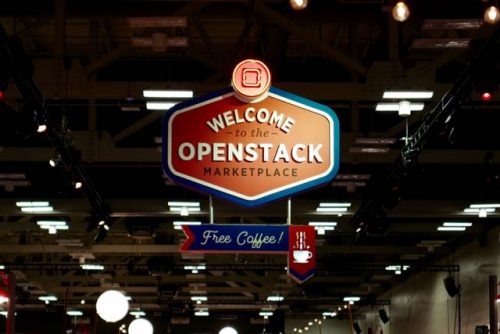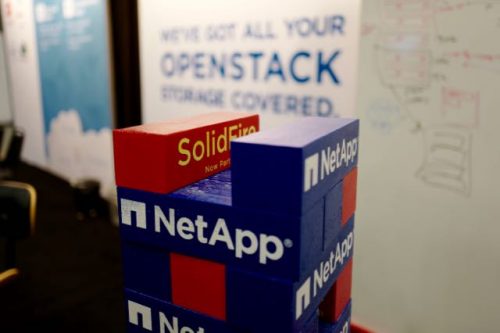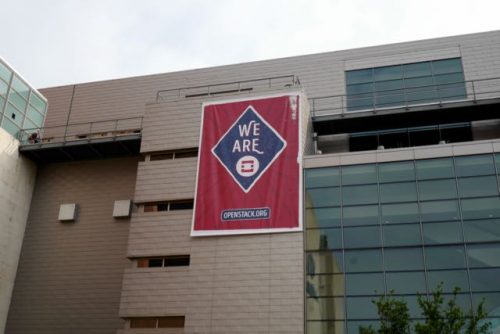Last week I headed to Austin, Texas to attend the semi-annual OpenStack Summit there. Along with the usual socializing, I was looking to understand the current state of the technology: What does OpenStack really mean these days, and where is it going?

Let’s start with “free”. As “the Internet” is quick to point out, this critical word has multiple meanings, and corporate interests have a tendency to divert everything toward profit. OpenStack is a free and open-source software platform for cloud computing, but it’s also a community of innovators ranging from enthusiasts to lone hackers to the world’s largest corporations.
OpenStack is free, but like all open source projects, someone has to pick up the tab. Who’s paying for development and supporting users? Certainly many individual contributors are involved, but the vast majority of code commits and new project components are coming from vendors trying to leverage OpenStack to sell their products and services.
OpenStack may be “free as in freedom” and “free as in coffee”, but it sure as heck costs a lot to deploy and productize. This is why so many companies came to Austin to be part of the Summit. Some, like Mirantis, see a tremendous opportunity to profit from growing OpenStack deployments. Others want to plug their existing products into these massive installs. Yet more seem to be hedging their bets or even just happy to be part of “the new thing”.
One popular refrain in the vendor booths at the Summit is that “no one but Mirantis is making any money here at this point”. This was refuted by a few companies who have managed to land big service provider customers for hardware and software, but the overall sense is that there’s a lot of free coffee being given out without a lot of sales coming in return. “Elephant hunting” was a familiar phrase.

As with any large open source project, OpenStack is developed mainly by large corporations. Companies like IBM, HP, Intel, and NetApp see it as an entrance to the new cloud/service provider market. Red Hat, Mirantis, and Canonical want to sell services and support. Rackspace needs a functioning cloud. All of these companies are pulling the project in different directions, and all are doing the right thing as far as they are concerned.
The risk, however, is that each of these agendas might disrupt or derail the whole project. Ultimately, customers will decide which to adopt, but this isn’t as democratic as it seems. Their decisions are affected by development resources and the availability of quality integration components more than the inherent technical appropriateness of a protocol or product. This is why NetApp is smart to be pouring resources into storage integration projects like Cinder: They enable storage integration generally while reassuring customers that NetApp products will work really well!
The happy outcome isn’t necessarily a cynical product push. Rather, by contributing to the code base, all these companies improve the entire product. But what about the companies that aren’t contributing much base code but are instead focused only on integrating their own products? Although not helping build OpenStack, these companies still contribute to the feeling of longevity for the project as a whole.
What will OpenStack be outside the enterprise? Although most assume it’s just for building “your own Amazon”, customers have been clamoring for an overarching data center management framework. OpenStack might just become that, too. This is certainly how Platform9 sees OpenStack: They can leverage the common OpenStack management framework across heterogeneous enterprise data centers, not just for the cloud. VMware too is quick to point out that OpenStack isn’t tied to a single hypervisor and works just as well with ESXi inside.

OpenStack might prove to be the ultimate unifier not just of cloud but of conventional IT systems as well. One could envision a future where OpenStack is both the unified management layer for the entire data center but also the framework on which next-generation applications rest. That’s the optimistic projection.
The pessimist might spot more clouds than blue skies. OpenStack could become just what it is today: The cloud platform for service providers not named Amazon. This is an acceptable outcome, but not exactly a transformative one for the enterprise data center.
Disclaimer: Tech Field Day came to OpenStack Summit, and NetApp was a sponsor. We also interviewed a dozen non-sponsors as part of the Tech Field Day Forum. See our Day 1 and Day 2 interviews. About half of the other companies mentioned here have sponsored Tech Field Day events in the past.
OpenStack reminds me of how Linux got started and matured. They have had lots of contributors to those projects and some making money via their services. Is Mirantis the RedHat of Cloud/OpenStack?